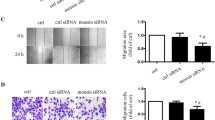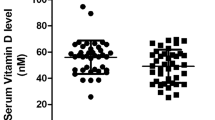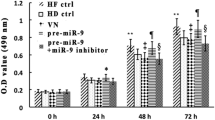Abstract
Diabetic vascular complications caused by endothelial dysfunction play an important role in the pathogenesis of diabetic foot. A well understanding of the role of endothelial dysfunction in diabetic foot vasculopathy will help to further reveal the pathogenesis of diabetic foot. This study aimed to assess whether the RhoA/ROCK signaling pathway is controlled by Rho GTPase-activating proteins (RhoGAP, ARHGAP) and advanced glycosylation end products (AGEs), and to clarify the roles of ARHGAP and AGEs in the RhoA/ROCK signaling pathway or the mechanism by which AGEs regulated RhoA. Real-time PCR was applied to detect gene expression. Manipulation of endothelial biological functions by ARHGAP18 and AGEs were studied via cell counting kit-8 (CCK-8), Western blot, transwell, FITC-Dextran and TEER permeability experiments. RhoA-specific inhibitor Y-27632 was used to silence the activity of RhoA. Dual Luciferase Reporter Assay, Western blot and ELISA assays were used to detect molecular mechanism of endothelial biological functions. In this study, we found that ARHGAP18 was negatively correlated with RhoA, and the expression of ARHGAP18 in human umbilical vein endothelial cells (HUVECs) was decreased with gradient-increased AGEs. Furthermore, AGEs and ARHGAP18 could orchestrate RhoA activity, then activate NF-κB signaling pathway, affect the structural and morphological of VE-cadherin and tight junction protein, and cause endothelial cell contraction, thereby increasing permeability of endothelial cells. In conclusion, AGEs and ARHGAP18 orchestrate cell proliferation, invasion and permeability by controlling the RhoA/ROCK signaling pathway, affecting NF-κB signaling pathway as well as the structure and morphology of VE-cadherin and tight junction protein, and regulating endothelial cell contraction.





Similar content being viewed by others
References
Boulton, A.J.: The diabetic foot: from art to science. The 18th Camillo Golgi lecture. Diabetologia. 47(8), 1343–1353 (2004)
Malgrange, D.: [Physiopathology of the diabetic foot]. (2008)
AWW, L.-S., A, H., R, W., N, E., AM, J., AJM, B., FL, B., ST, R., FL, W., MY, A.: Diabetic endothelial colony forming cells have the potential for restoration with glycomimetics. Scientific Reports 9(1), 2309 (2019)
Pennanen, P., Syvala, H., Blauer, M., Savinainen, K., Ylikomi, T., Tammela, T.L.J., Murtola, T.J.: The effects of metformin and simvastatin on the growth of LNCaP and RWPE-1 prostate epithelial cell lines. Eur. J. Pharmacol. 788, 160–167 (2016). https://doi.org/10.1016/j.ejphar.2016.06.036
E, A., A, P., G, O.: Plasma rich in growth factors promotes dermal fibroblast proliferation, migration and biosynthetic activity. Journal of Wound Care 25(11), 680–687 (2016)
Aino, S.P., Wei-Zeng, Z., Kylie, V., Coughlan, M.T., Emma, H., Tong, D.C.K., Daniella, B., Karri, P., Jaye, C.D., Cooper, M.E.: Advanced glycation end-products induce vascular dysfunction via resistance to nitric oxide and suppression of endothelial nitric oxide synthase. J. Hypertens. 28(4), 780 (2010)
Akiko, H., Takahisa, T., Hiroko, M., Yosuke, O., Yoshiya, T.: Advanced glycation end products increase endothelial permeability through the RAGE/Rho signaling pathway. FEBS Lett. 584(1), 61–66 (2010)
O, S.-S., C, H., R, S.: The ERM complex: a new player involved in diabetes-induced vascular leakage. Current medicinal chemistry undefined (undefined), undefined (2018)
S, Q., V, R., M, S., RA, C., MH, R.: Continual cell deformation induced via attachment to oriented fibers enhances fibroblast cell migration. PloS one 10(3), e0119094 (2015)
C, A., S, K., R, S., KM, R., TL, C.: Structure and biomechanics of the endothelial transcellular circumferential invasion array in tumor invasion. PloS one 9(2), e89758 (2014)
Feng, X., Li, C., Liu, W., Chen, H., Zhou, W., Wang, L., Zhu, B., Yao, K., Jiang, X., Ren, C.: DLC-1, a candidate tumor suppressor gene, inhibits the proliferation, migration and tumorigenicity of human nasopharyngeal carcinoma cells. Int. J. Oncol. 42(6), 1973–1984 (2013). https://doi.org/10.3892/ijo.2013.1885
Etiennemanneville, S., Hall, A.: Rho GTPases in cell biology. Nature. 420(6916), 629–635 (2002)
Ridley, A.J.: Rho family proteins: coordinating cell responses. Trends Cell Biol. 11(12), 471–477 (2001)
Schwartz, M.A., Shattil, S.J.: Signaling networks linking integrins and Rho family GTPases. Trends Biochem. Sci. 25(8), 388–391 (2000)
Takaishi, K., ., Sasaki, T., ., Kameyama, T., ., Tsukita, S., ., Tsukita, S., ., Takai, Y., . Translocation of activated rho from the cytoplasm to membrane ruffling area, cell-cell adhesion sites and cleavage furrows. Oncogene 11(1), 39 (1995), 48
Klinefelter, R.G.: Effect of luteinizing hormone deprivation in situ on steroidogenesis of rat Leydig cells purified by a multistep procedure. Biol. Reprod. 36(3), 769–783 (1987)
Li, X., Liu, J., Chen, B., Fan, L.: A positive feedback loop of Profilin-1 and RhoA/ROCK1 promotes endothelial dysfunction and oxidative stress. Oxidative Med. Cell. Longev. 2018(5), 1–9 (2018)
Chang, G.H.K., Lay, A.J., Ka Ka, T., Yang, Z., Coleman, P.R., Powter, E.E., Ann, F.P., Jolly, C.J., Bower, N.I., Hogan, B.M.: ARHGAP18: an endogenous inhibitor of angiogenesis, limiting tip formation and stabilizing junctions. Small GTPases 5(3) (2014)
R, B., A, S., S, B., A, D., M, K.: Proteomic study of endothelial dysfunction induced by AGEs and its possible role in diabetic cardiovascular complications. J. Proteome 187(undefined), 69–79 (2018)
E, A., BN, D., SC, Z., L, G., R, D., JM, M., MS, T., L, N.-S., RP, P., AV, S., MR, A.: Rho-kinase: regulation, (dys)function, and inhibition. Biol. Chem 394(11), 1399–1410 (2013)
EE, P., PR, C., MH, T., AJ, L., P, B., RG, P., MA, V., JR, G.: Caveolae control the anti-inflammatory phenotype of senescent endothelial cells. Aging Cell 14(1), 102–111 (2015)
P, K., Q, S., CD, P., ES, L., MH, W., SY, Y.: Molecular mechanisms of endothelial hyperpermeability: implications in inflammation. Expert reviews in molecular medicine 11(undefined), e19 (2009)
SC, C., CC, L., SY, H., SJ, C.: Vascular hyperpermeability in response to inflammatory mustard oil is mediated by Rho kinase in mice systemically exposed to arsenic. Microvasc. Res. 82(2), 182–189 (2011)
Y, Y., J, Q., M, L., Q, R., Y, L., Z, Z.: Role of Rho kinase in lysophosphatidic acid-induced altering of blood-brain barrier permeability. International journal of molecular medicine 33(3), 661–669 (2014)
NV, B., MA, Z., C, P., T, M., I, K., AR, B., AD, V.: The suppression of myosin light chain (MLC) phosphorylation during the response to lipopolysaccharide (LPS): beneficial or detrimental to endothelial barrier? J. Cell. Physiol. 226(12), 3132–3146 (2011)
Acknowledgments
We sincerely acknowledged the assistance given by the Qingpu Branch of Zhongshan Hospital, Fudan University, Shanghai, P.R. China.
Funding
This study was funded by Health Bureau of Qingpu District of Shanghai (No.W2018–18).
Author information
Authors and Affiliations
Corresponding author
Ethics declarations
Conflict of interest
The authors declare that they have no financial or non-financial competing interests.
Ethical approval
This research involved human participants. All procedures performed in studies involving animals were in accordance with the ethical standards of Qingpu Branch of Zhongshan Hospital, Fudan University, Shanghai, P.R. China and with the 1964 Declaration of Helsinki and its later amendments.
Informed consent
Informed consent was obtained from all participants prior to their enrollment in the study.
Additional information
Publisher’s note
Springer Nature remains neutral with regard to jurisdictional claims in published maps and institutional affiliations.
Xu Li and Yue Tao are Co-first author
Rights and permissions
About this article
Cite this article
Li, X., Tao, Y., Wang, X. et al. Advanced glycosylation end products (AGEs) controls proliferation, invasion and permeability through orchestrating ARHGAP18/RhoA pathway in human umbilical vein endothelial cells. Glycoconj J 37, 209–219 (2020). https://doi.org/10.1007/s10719-020-09908-0
Received:
Revised:
Accepted:
Published:
Issue Date:
DOI: https://doi.org/10.1007/s10719-020-09908-0




